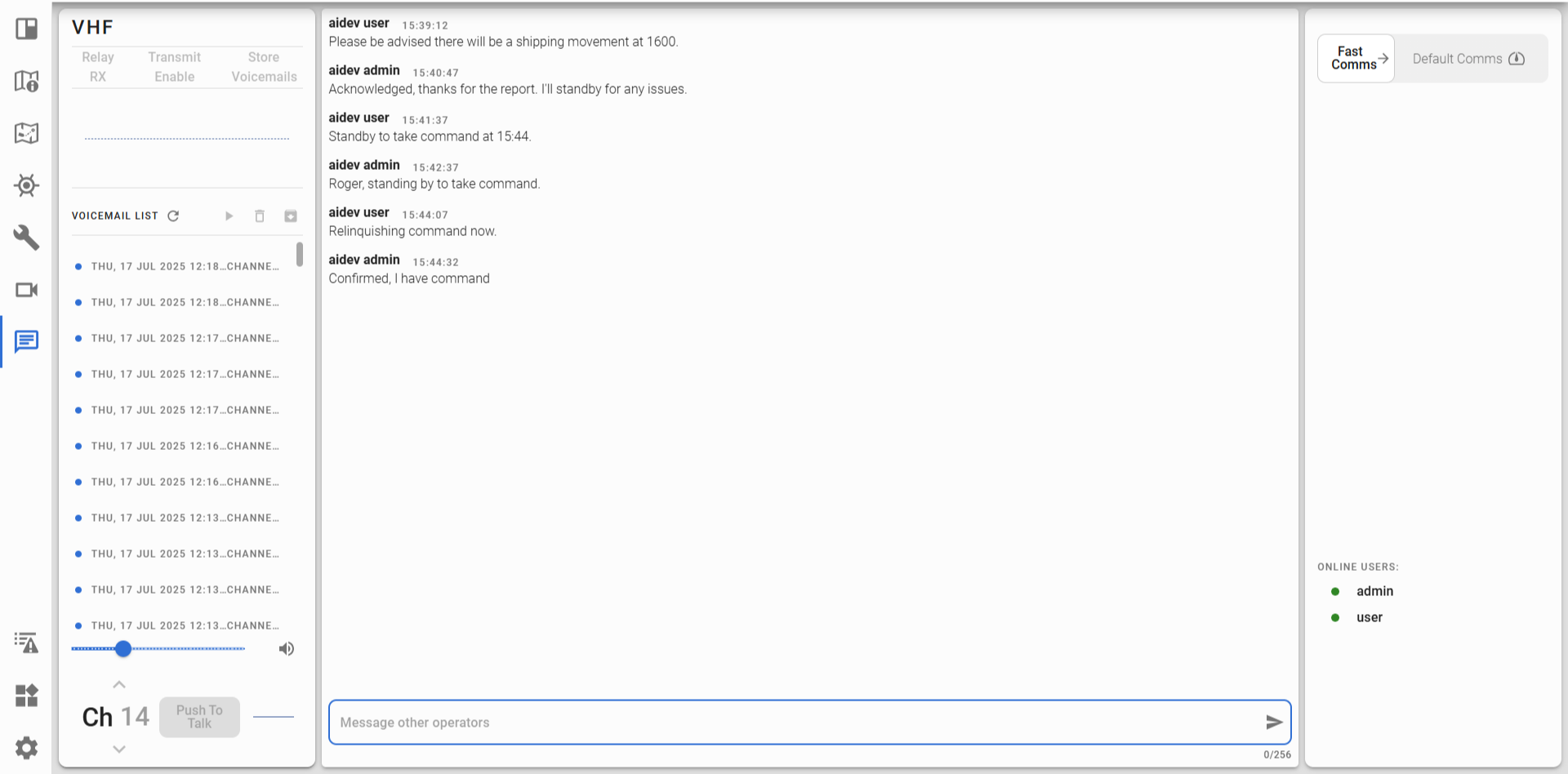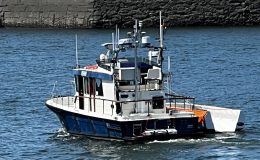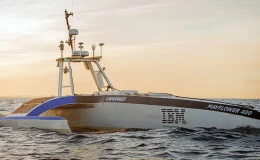At MarineAI, we are enabling smarter ship-to-ship communication using AI models.
The ocean has always been a place where clear communication can mean the difference between safe passage and disaster. As autonomous vessels start to share waters with traditional ships, ensuring seamless communication between all parties becomes not just important, it’s absolutely critical. So, when it comes to autonomous ships, a key question emerges: how do we ensure they can participate in these essential conversations just like any other vessel?
At MarineAI we have a clear goal: make autonomous ships not just safe and efficient, but also reliable ‘communicators’.
We’ve developed a system that allows autonomous vessels to listen in on standard VHF ship-to-ship calls. Using an in-house AI model, the spoken audio is converted into text in real time. From there, a language model interprets what’s being said , assessing the situation, understanding intent, and crafting an appropriate, clear response. That response is then broadcast back over VHF, allowing autonomous vessels to actively engage in the same communication loop as their crewed counterparts.
For example:
A nearby cargo vessel might call out, “Autonomous vessel off my port bow, what are your intentions?” Our system picks up the call, transcribes it instantly, understands the context (including surrounding traffic and heading), and replies: “This is the autonomous vessel Oceanus 12. We are maintaining current course and speed. We intend to pass astern of you.”
Perhaps the most important aspect of the system is that it doesn’t just react, it proactively communicates. Based on its understanding of the maritime environment and its operational intentions, the autonomous vessel can broadcast clear, contextually appropriate messages to inform other vessels of its plans and ensure safe passage for all.
This bridge-to-bridge VHF capability represents one aspect of our comprehensive approach to autonomous maritime technology.
This is just one example of how our research and development capability sit at the very core of what we do. From AI-powered decision making to trusted ship-to-ship dialogue, we’re building autonomy that fits seamlessly into the real maritime world, with no compromise on safety, clarity, or trust.
Stay tuned , we’ve got more to share.
Bridge-to-bridge VHF Example
Autonomous vessel, autonomous vessel, this is container ship, container ship, over.
Container ship, container ship, this is Mayflower Autonomous Vessel, Mayflower Autonomous Vessel, over.
Autonomous vessel, autonomous vessel, this is container ship, i see you on my port bow, what are your intentions?
Container ship, this is Mayflower Autonomous Vessel, I see you on my port bow, my intentions are to maintain a safe distance and follow standard navigation procedures, I will not alter course.
Autonomous vessel, this is container ship, roger, i understand you will maintain your course in speed, i will pass a stern of you, many thanks, out.
Container ship, this is Mayflower Autonomous Vessel, roger, I understand, I will continue on my course and keep a safe distance, thank you for your courtesy, out.







